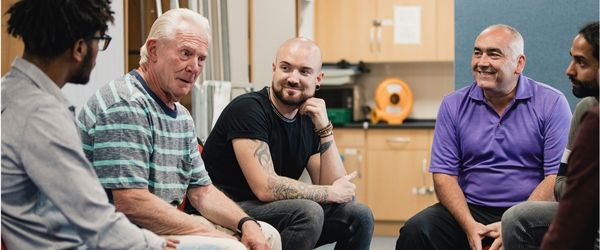When most people think of someone with breast cancer, they think about women. Many are surprised to find out that men can also get breast cancer. Breast cancer develops in breast tissue, and men have breast tissue too, even though they can’t produce milk.
Personal stories from patients on websites like Male Breast Cancer Happens show how common this myth is. Many men initially express disbelief and shock at being diagnosed with a “woman’s disease”.
How common is male breast cancer?
While male breast cancer represents less than 1% of all breast cancer cases, it is still a disease that men should be aware of. In Canada, about 290 men are diagnosed annually, and 60 will die from it. About 1 in 5 men with breast cancer have a close relative (male or female) who also had the disease.
Men can also carry inherited genetic mutations in the BRCA1 or BRCA2 genes, putting them at higher risk. Research shows that biological males carry these mutations as often as women do and then can pass them on to their children.
Transgender people may also be at risk. Transgender women (assigned male at birth) can develop breast cancer, especially if they have taken feminizing hormones. Trans men who have not had chest surgery or who take testosterone may also face some risk.
Challenges in screening and diagnosis
Regardless of those statistics, screening and awareness are designed without men in mind. Awareness and screening campaigns often target women and use pink branding, a colour associated with women and female gender norms, helps reinforce the myth that men don’t get breast cancer.
Men may also face practical barriers. Getting a mammogram as a man can be challenging because the machines are designed for female bodies. Diagnostic centres for breast cancer can be an uncomfortable experience for someone not accustomed to woman-centred health. One patient on Male Breast Cancer Happens talked about his uneasiness in being told to go to the “woman’s centre” for a breast ultrasound, feeling that he would be seen by the female patients there as an anomaly.
Risk factors and signs to watch for
In addition to BRCA mutations, other factors can increase a man’s risk of breast cancer:
- Age (most cases are diagnosed between 60 and 79)
- Family history
- Radiation exposure to the chest
- Klinefelter syndrome (a rare genetic condition)
- High estrogen levels, which can result from liver disease, obesity, or certain hormone treatments
The signs of breast cancer in men are similar to those in women. See your doctor if you notice:
- A lump in the breast (usually painless)
- Nipple changes, like discharge or turning inwards
- Skin changes, like dimpling or a thickening over the breast area
The popular belief that men don’t get breast cancer can result in more negative outcomes for the men who do. Lack of awareness, gendered thinking, or embarrassment can prevent men from seeking medical advice if they notice something different about their breast tissue. Because of these delays, up to 40% of the men who develop breast cancer are at a higher risk of an advanced diagnosis.
Support and resources
There is, however, a slowly growing body of support and educational resources for men who develop breast cancer. In addition to the above-mentioned Male Breast Cancer Happens, there is also:
While breast cancer is often seen as a women’s disease, the reality is that men can and do face this diagnosis. By challenging the myth that men don’t get breast cancer, we make way for greater awareness, earlier detection, and better support for everyone affected. This is an important step toward breaking down stigma and ensuring that all patients, regardless of sex or gender, receive the care they deserve.







